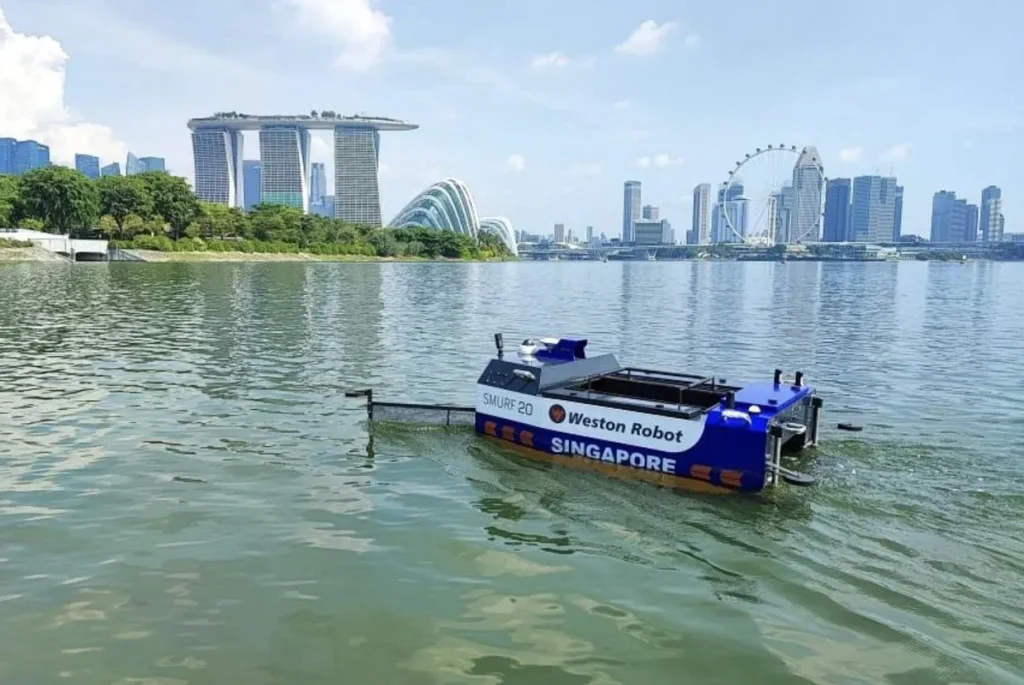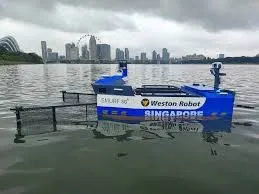The rise of robotics in Singapore is revolutionizing the environmental services industry. Leading this change is Weston Robot, a local firm specializing in autonomous robots. These robots, including waterway cleaners, sweepers, and grass-cutting machines, are transforming how public spaces are maintained across the island.
Weston Robot, based in Singapore, has deployed over 300 autonomous robots. Among their innovations is a waterway cleaning robot that uses artificial intelligence (AI) to identify and collect rubbish more efficiently.
“With AI, our robot can recognize rubbish and flotsam, then navigate to collect it more effectively,” explained Zhang Yanliang, Chief Scientist at Weston Robot. The company’s robots are already in use at iconic locations such as Gardens by the Bay and Jurong Lake Gardens.

Zhang highlighted the significant cost savings and safety improvements these robots offer. “The operator no longer needs to sit on a slippery boat after rain. Instead, they can comfortably supervise the robot from a control room,” he said.
Weston Robot was one of more than 40 innovators presenting at the CleanEnviro Summit in Singapore. This event showcased cutting-edge solutions and prototypes that are poised to reshape the environmental services sector.
As the industry shifts towards embracing robotics and emerging technologies, the National Environment Agency (NEA) is actively funding and supporting these advancements. One such initiative is the Falcon robot, developed by researchers at the Singapore University of Technology and Design (SUTD).
The Falcon robot, supported by NEA’s national robotics program, represents a significant leap forward in building maintenance. Designed by SUTD, Falcon eliminates the need for manual inspection of false ceilings, a task typically done by pest control workers.
Associate Professor Mohan Rajesh Elara from SUTD explained, “The Falcon robot can access hard-to-reach areas, performing tasks that are often tedious or dangerous for humans. Pest control personnel can now control and monitor the robot as it looks for signs of pests in the nooks and corners of false ceilings.”
SUTD is also behind Panthera, a novel reconfigurable pavement sweeping robot. This innovation is part of a broader trend where robots take over tasks that are dull, dirty, and dangerous, freeing human workers from ergonomically challenging processes.

“With projects like Falcon and Panthera, we are seeing a transformation in job roles,” noted Assoc Prof Mohan. “Workers are now becoming robot operators, managing multiple robots at once instead of performing physically demanding tasks. This shift is creating a new class of jobs focused on supervising and managing robotic operations.”
The integration of robotics into environmental services is not just about technology; it’s about improving working conditions, safety, and productivity. NEA’s support for these innovations underscores Singapore’s commitment to leading in smart technology applications.
As these robotic solutions continue to develop, they promise to make a significant impact on how environmental services are delivered, ensuring Singapore remains a clean, efficient, and technologically advanced city.
